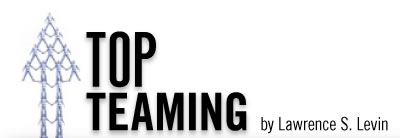A Compelling Argument about Leadership Team Development
I have had the honor of participating in really well done Strategic Talent Reviews. These are the necessary conversations about current and emerging talent within an organization that have the following purposes:
- Identify/Track current and future leaders
- Calibrate/Align behind what we mean by “high-potential”
- Begin to seed “bench strength” and possible succession within the company
- Create meaningful development plans and a real commitment to their execution
For the most part, these STR’s are discussions (not just presentations) about individual leaders who hold positions of responsibility and their future emergence into more critical leadership roles within the company. If done well, these meetings are more than an HR or Talent Development–led exercise, but an active and involved dialogue about promising individuals and what we must do to develop and keep their talent alive.
There is, however, a critical dialogue that is often missing and needs to occur more frequently in these important discussions, and that is how these emergent leaders are building and developing their teams. In small to large companies, from community hospitals to global organizations, most work gets done through teams of people who have only basic training in how a team must optimally function and what it must do to become a Top Team.
Think about the issues facing most teams today:
- Rapid change and adaptation – in structure, markets, technology, and global reach
- Responsibility for what we call “The Now, the New, and the Next” – ensuring that the basic business operates well, anticipates the going forward change that new strategic issues bring, and aligning behind the critical few priorities going forward
- Managing the critical intersections in complex matrix and global organizations
- Developing the people, and the teams, which report to them.
Clearly, the nature of business is changing. But are we preparing teams and those who lead these important teams to understand what is changing and what the requirements are for success going forward? Our observation is that classic high-performance teams were not designed for the highly complex, volatile, and ambiguous world of today. What is the state-of-the-art and how do we train evolving leaders to “skate to the puck?”
So where and when do we have this conversation? Do we ask each other how individual leaders can learn to further their expertise in leading Top Teams? Does this discussion become part of a Strategic Talent Review? Our strong belief is that the Leadership Team discussion has an important, but often neglected place in an active Talent Review that is ultimately designed to build organizational capability and effectiveness. What do you think?
